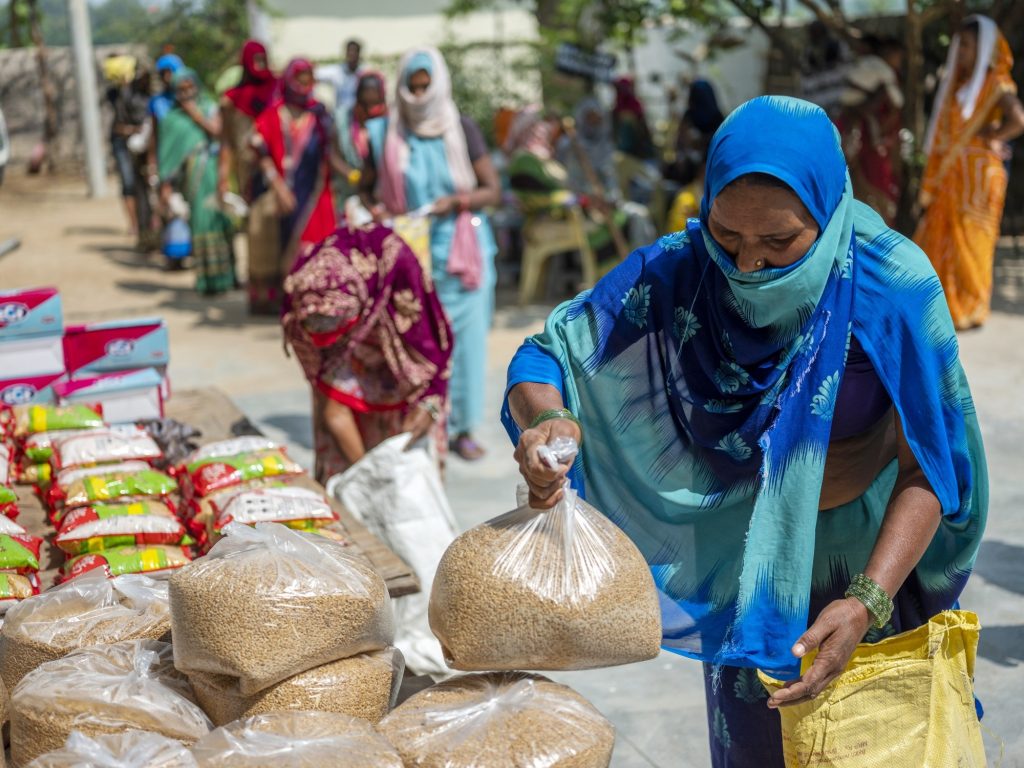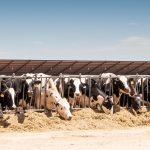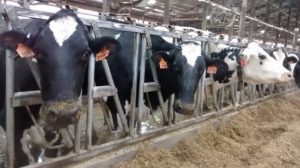
The cost of feeding the world is the most expensive it’s been in years. The Food and Agriculture Organization’s food price index, which tracks a basket of grains, vegetable oils, meat, dairy and sugar, rose to its highest level in a decade in May.
On the Chicago Mercantile Exchange, the prices of soybean oil is more than double what it was a year ago, while lean hogs and ethanol are up by about three-quarters. The same dynamic is affecting corn, palm oil, coffee, sugar and a host of other commodities. Even the price of moving food around the world is surging: The Baltic Handysize Index, which tracks freight rates on the ships used for hauling grains between continents, is at levels last seen in 2008.
Calorie Counting
Prices of major agricultural commodities have surged over the past 12 months
Food prices have always been cyclical, and most agricultural futures are now off their peaks from early May. Even the FAO’s food price index fell marginally last month, after a year of back-to-back increases. Still, there’s reason to believe the current disruptions won’t disappear immediately as the world returns to pre-pandemic norms. China’s hunger for protein as incomes rise, combined with the lingering effects of African Swine Fever, isn’t going to disappear overnight. Moreover, even a short bout of food inflation can be damaging for the world’s poorest, who are rarely more than a few meals away from hunger.
Below, Bloomberg Opinion writers look at some of the reasons why the cost of food keeps rising.
Cooking oil: It’s unusual for a large country to develop a culinary culture divorced from local produce, though that’s just the paradox driving global trade in one food item: cooking oil. Indians, who have for millennia fried their samosas, parathas and dosas, are also the world’s largest importer of liquid vegetable fat.
The unhealthy dependence has come to bite over the past year. The indigenous cooking mediums used in different parts of the country — mustard oil in the east and north, groundnut oil in western and central India and sesame and coconut oil in the south — have all seen dramatic price increases following a 44% surge in their mostly imported substitutes. These include palm oil from Indonesia and Malaysia; soybean oil from Argentina, Brazil and the U.S.; and sunflower oil from Ukraine and Russia.
Getting Fried
Prices of all kinds of cooking oils used in Indian kitchens have gone up by 15% to 45% over the past year even as Covid-19 has led to job and income losses
Source: Central Statistics Office India; inflation statistics
While reasons for skyrocketing prices range from food crops’ competing use in biofuels to floods in Malaysia, dry weather in Brazil and port- worker strikes in Argentina, they’re threatening India with a second year of nutrition crisis, after the poor cut back on protein last year, having lost their livelihoods to Covid-19 lockdowns.
As B.M. Vyas, the former head of India’s largest farmers’ cooperative, says, the deliberate discrediting of local, cold-pressed filtered oil as adulterated — and dangerous — destroyed the self-sufficiency of the early 1990s. Consumers got hooked on imported, refined oil. Nowadays, Indian farmers respond only hesitatingly to higher palm-oil prices to grow more mustard or groundnut. Even seeds of soybean, which became a commercial crop in India in the 1970s, are so expensive this year that farmers can’t increase acreage, says Manu Kaushik, a New Delhi-based food marketing consultant. With 70% of demand met via imports, the typical government reaction to high prices is to make imports still cheaper.
Food is about power. An insidious capture of the eating habits of 1.4 billion people by foreign-grown oilseeds is hurting India’s poor in the middle of a pandemic — as both farmers and urban consumers. — Andy Mukherjee
Corn: The price of food isn’t just determined by what you put on your plate. Take corn. Only about a quarter of the U.S. crop gets turned into tacos, breakfast cereals, sweetcorn and popcorn. Some 40% is turned into ethanol for blending into gasoline, and another third is used for animal feed.
That helped drive corn futures to an eight-year high in May. Weekly U.S. gasoline production crept above 10 million barrels a day in June for the first time since 2019 and road use in many major cities is creeping back toward its pre-pandemic trend. Feed production, too, is booming — especially in China, which has been rebuilding its pig herd as the worst effects of the African Swine Fever epidemic recede. More than half of the 42 million ton increase in corn imports globally over the past five years has come from China alone.
Fuel’s Gold
U.S. gasoline production has topped 10 million barrels a day for the first time since 2019
All that has come crashing into drought conditions across many of the world’s most important growing regions. Brazil has been gripped by its worst drought in nearly a century, reducing crop forecasts by about 11 million tons. We’re seeing something similar in Argentina, and even the U.S. — often the beneficiary of weak seasons in South America — is now facing severe drought in the Midwest and Great Plains corn belt. If North American crops have as bad a harvest as those south of the equator, there may be more pain in store for corn buyers. — David Fickling
Dairy: Milk prices have been in rude health this year. New Zealand’s weekly whole milk powder auctions, a sort of benchmark for the worldwide industry, peaked at $4,364 a metric ton in March, their highest level since 2014. As in so many commodity markets, the reason is China.
Rising incomes mean surging sales for products from cakes and pastries to bubble tea — all major consumers of dairy fat and solids. Such products are by far the most important driver of dairy demand. Even the U.S. consumes no more than about one-seventh of its dairy output as liquid milk. Affected by limits on land availability and animal feed production, China has struggled to increase domestic output. The dairy herd actually declined from 8 million to 6.2 million cows between 2016 and 2020, although output managed to creep up as the industry concentrated on its most productive cattle.
Milky Way
China’s milk output hasn’t risen fast enough to keep up with demand.
That’s not as unadulterated good news for dairy farmers as it might seem. On the supply side, a major driver is the increased price of soybeans and corn, which is lifting the cost of animal feed. Feed production, at about 1.09 billion tons a year, accounts for a substantial slice of the 2.8 billion ton global cereal industry. China’s insatiable appetite for protein is being felt from the soy fields of Illinois to the pastures of Tasmania. — David Fickling
Pork: Last August, China’s President Xi Jinping took time away from managing Covid and a bitter trade war to launch a campaign encouraging Chinese to clean their plates. The timing was no accident. In July, the price of pork, China’s staple protein, had surged 85.7% from a year earlier, helping to drive the overall inflation rate up 2.7%. The most significant cause was a two-year-old outbreak of African Swine Fever that wiped out as much as 60% of the country’s world-beating hog herd.
For decades, pork has had an outsize influence on Chinese dinner tables and politics. When the price increases rapidly, it’s a potent symbol of wage and class stagnation. Revolutions will not be joined because the price of pork ribs is rocketing. But the middle-class anxieties triggered by Chinese food inflation can slowly erode the credibility enjoyed by a government that’s long delivered economically.
Boom and Bust
China’s pork consumer price inflation soared last year and is now plummeting.
Since the beginning of 2021 China’s hog population has recovered rapidly from Asian Swine Fever. In response, panicked selling by farmers expecting higher prices has driven the price of pork relentlessly downward during 2021. Nobody, including the government, believes the low prices are forever. Last month, the government announced that it’s preparing policies to deal with future instability in the market. So far, clean plates aren’t a part of the package. — Adam Minter
Hunger: The trouble with rising food prices is that the burden doesn’t fall equally. The cost of food imports, which feed four-fifths of the world, is expected to rise to $1.7 trillion this year, according to the United Nations’ Food and Agriculture Organization. Break that down, and you find the bill for emerging economies jumping by more than a fifth, compared to a 6% increase for wealthier countries. Food already represents a far larger portion of domestic spending in developing countries, and many have been worse-hit by a pandemic that has hampered mobility and informal work.
The result is twofold. First, there’s the risk of unrest. At least 155 million people faced acute hunger last year — 20 million more than in 2019. People do not just riot about food, and in fact the starving rarely do so at all. But they do rise up against injustice that hampers their right to affordable nutrition — and the sort of inequities laid bare during the pandemic. Angry, hungry bellies tend not to sit quietly, from Ancient Rome; to the golden age of English food protests; to bread riots in Petrograd in 1917; to upheaval in India, at least 14 African countries and elsewhere when prices surged globally in 2007 and 2008; right up to the protests against food shortages that hit Cuba this past weekend.
Yet the silent problems piling up for the longer term should worry us more. The human capital of developing nations has been battered. Children have been kept out of school, with no credible online replacement. Add on the cost of malnutrition that will follow this sort of price spike as fresh vegetables and fruit are replaced with starch: weaker cognitive development and earning potential follow, even in rich countries.
The good news is we know how to counter some of these effects: Breakfast and other school feeding programs, for a start. There just has to be the desire to do something. — Clara Ferreira Marques
— With assistance by David Fickling, Andy Mukherjee, Adam Minter, and Clara Ferreira Marques

























